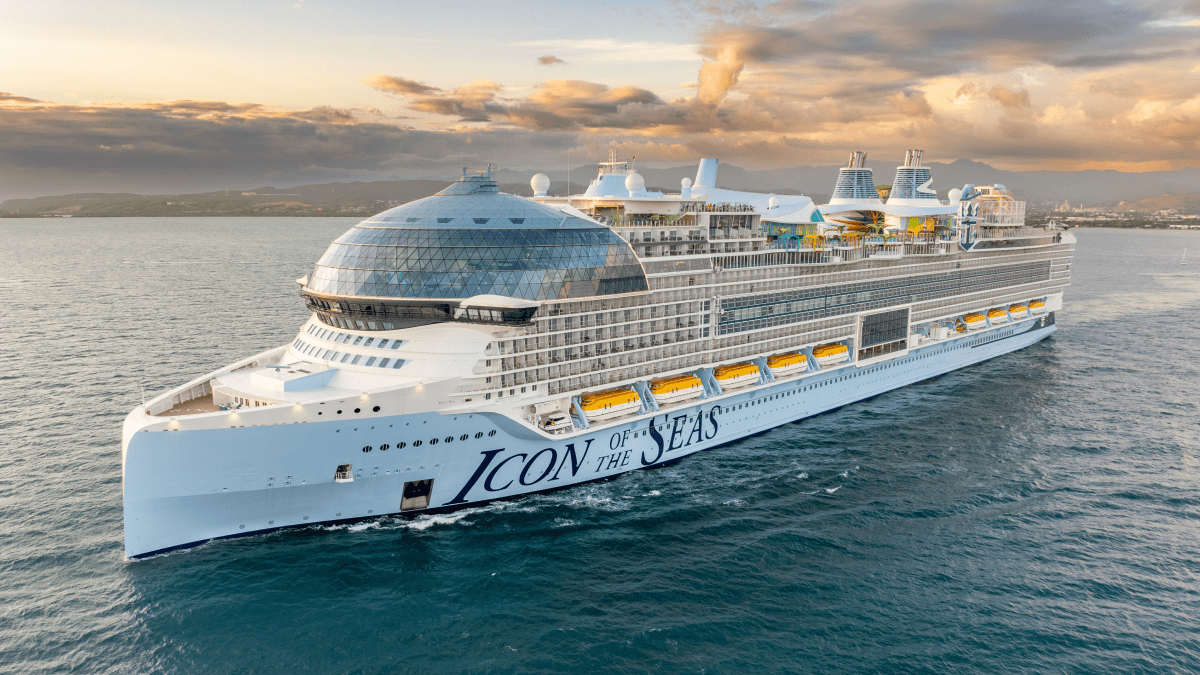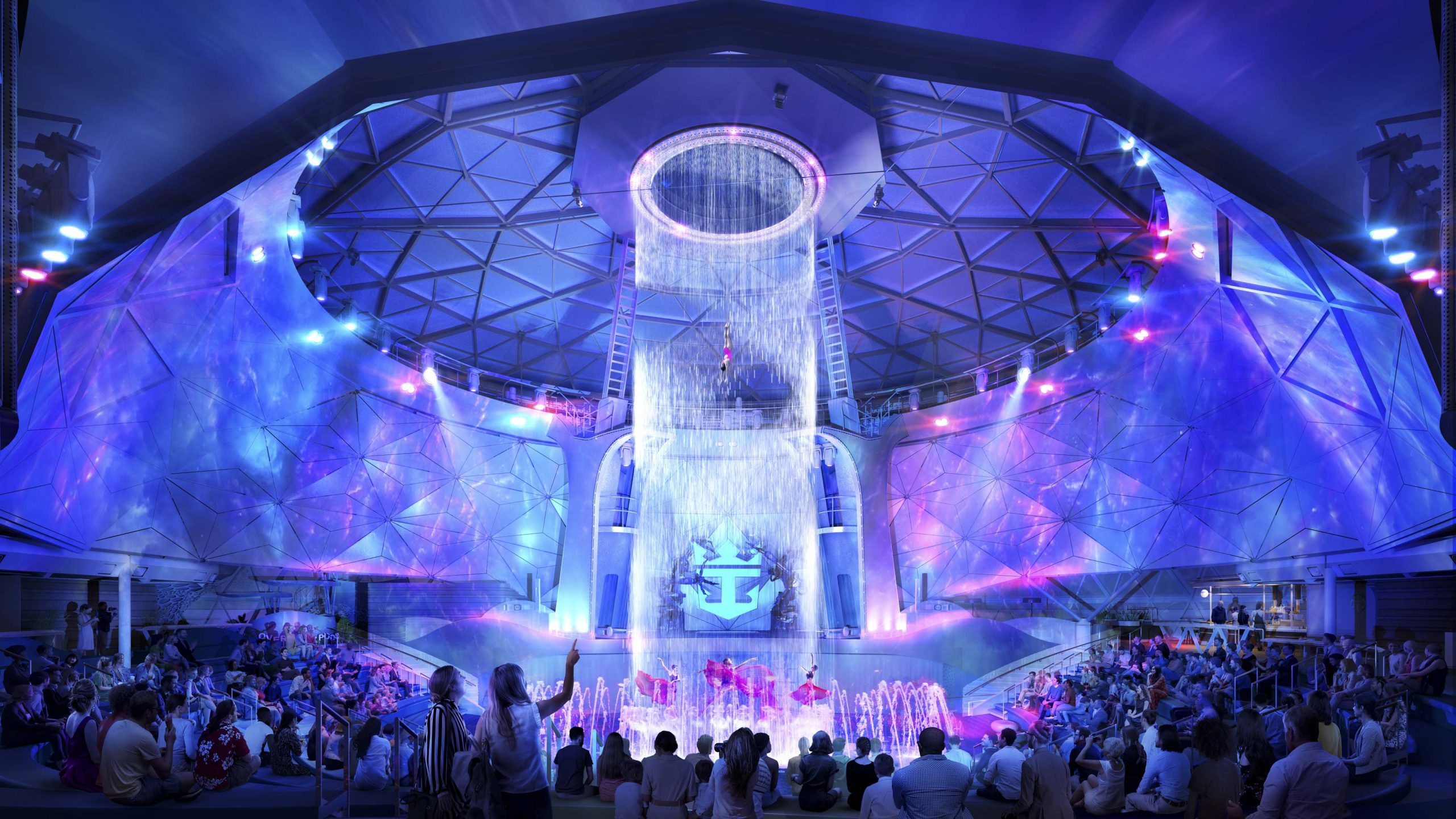April 24, 2024
Keeping the ultimate vacation safe and stable – the advanced digital technology behind the Icon of the Seas

Described by Royal Caribbean as the “boldest initiative”, Icon of the Seas, has made global headlines for its extraordinary size and flamboyant features on board, including a water park, a 55-foot-tall indoor waterfall and a suspended infinity pool. However, the vessel is also a pioneer in another way: from next-generation safety and stability systems to a high level of digital integration on board, and sending real-time safety data to shoreside.
As the first of three LNG-powered ships in its “Icon” class, Icon of the Seas sets the tone for the future of cruise, with enhanced experiences on board. The larger the ship, the higher the stakes to ensure its safety, stability, and operational efficiency – and the bigger the need to collect and integrate data to monitor operations in real time and benchmark for potential improvements.
Let’s take a closer look at FIVE new and advanced safety technology that is keeping Icon of the Seas – and its nearly 5,600 guests and 2,000 crew – safe throughout their journeys at sea.
1. Advanced stability systems
Icon of the Seas features our next-generation NAPA Stability, which enables crews and their colleagues ashore to take a proactive and collaborative approach to ensure its safety.
NAPA’s software was used to determine the ship’s stability parameters right from the early design stage and is therefore at the very foundation of the vessel’s safety and stability. The same models are today used to support decision-making during the ship’s operations, giving captains the best possible accuracy for stability calculations, based on the ship’s unique design and parameters.

Ensuring the vessel’s stability is a complex puzzle given its size and the number of innovative features on board, adding weight to the upper decks. For example, Icon of the Seas features an AquaTheater at the front of the top decks, as opposed to being located aft and on lower decks like on Oasis-class vessels. The ship’s AquaDome is the largest single structure of glass and steel ever included on a cruise ship. Also adding weight is the additional volume of water onboard – Icon has more water features than any other vessel in the fleet, including the largest pool at sea. Adding those heavy features very high on the structure raises the ship’s vertical center of gravity and impacts a range of stability parameters including free surface moment. This needs to be accounted for at the design stage, but also in stability calculations to ensure the safety of everyday operations. This is an example of how NAPA’s safety software can serve as an enabler for innovation.
2. Safety data and digital twin on shoreside
Moving into day-to-day operations, NAPA Stability constantly monitors a number of variables that may affect a vessel’s stability, with data shared with shoreside teams in real time through the cloud-based NAPA Fleet Intelligence platform. As a result, risk levels can be assessed constantly by crew and shoreside teams alike, creating a more proactive approach where potential issues can be flagged and addressed before they ever become a serious problem.
Icon of the Seas is a prime example of design data being used throughout a ship’s lifetime to ensure safe, efficient operations. The 3D models that were used to design the vessel have formed the basis of a “digital twin”, giving a strong, ship-specific foundation for advanced stability calculations that ensure the vessel’s safety at all times, and modelling that supports operational decision-making for greater efficiency. Ultimately, operational data collected on board can be fed back to the shipyard to help improve the next generation of vessels for Royal Caribbean – just like the insights used to inform Icon of the Seas come from other Royal Caribbean vessels designed and operated using NAPA’s solutions.
3. Faster emergency response
The shared situational awareness between ship officers, shoreside teams and emergency services delivered by NAPA systems is critical if an emergency were to happen on board, facilitating immediate and efficient intervention. In case of a flooding incident, NAPA Emergency Computer would automatically switch over to emergency mode, providing dynamic vulnerability and survivability status assessments to onboard and onshore teams alike, with a detailed timeline. This enables teams to monitor the exact situation in real-time, see how their countermeasures are affecting the situation, and make better-informed decisions faster.
With as many as 2,000 crew members and 5,600 guests at double occupancy, these advanced emergency calculation capabilities are vital.

4. Unprecedented digital integration
The larger the ship and the more cutting-edge its entertainment offering on board, the more complex the operations and the higher the volume of onboard data generated. Collecting, integrating, and managing this flow of data to ensure compliance with regulatory requirements is essential, but this is also an opportunity to benchmark to improve a wide range of operational aspects, from waste, water and bunkering management, as well as engine and tank use.
This is what Icon of the Seas is able to achieve with NAPA Logbook. The advanced electronic data-recording system automates and streamlines data collection and reporting for crews for a wide range of reports, including Deck logbook, Engine logbook, Ballast Water Management Book, Environmental Records, Voyage Reporting, Radio/Global Maritime Distress and Safety System (GMDSS), Compass Gyro Records, Stability, and Status board. Then, NAPA Fleet Intelligence brings the different data streams together to shoreside teams for analysis and benchmarking to unlock new insights to optimize a wide range of operational aspects.
Furthermore, Icon of the Seas features a high level of digital integration, where stability systems and emergency computers communicate with the Wärtsilä NACOS navigation system.
5. Enhanced loading decision-making
NAPA is also equipped with two NAPA solutions that support decision-making on loading conditions. Firstly, the NAPA Balancing Tool within NAPA Stability allows for automated calculations and substantially quicker re-balancing of a large number of loading conditions, such as freshwater or ballast. This makes a significant difference, replacing traditional time-consuming manual re-balancing of loading conditions to match with target displacement, trim, and draught, to take three examples.
Furthermore, Icon of the Seas features NAPA OptiFloat, a trim and displacement optimization system, which is integrated into the stability computer to ensure safe optimization and enables the pre-planning of trim before departure.
So, what does this all mean for the future of cruise?
Next-generation digital tools are a key pillar in designing and operating innovative passenger ships efficiently, without compromising on safety.
The cruise sector is already a pioneer in terms of digital systems on board, and we can expect this trend to intensify going forward.
As ships supersize, technology breakthroughs must be supported by advanced stability and operational efficiency software that can validate feasibility at the design stage, and support crews and their colleagues ashore with operational decision-making.
The installation of NAPA’s entire series of safety systems on the Icon of the Seas is the latest in a long series of fruitful collaborations between NAPA and Royal Caribbean. NAPA software is currently installed on all Royal Caribbean International class vessels, helping deliver efficient, safe and environmentally sound operations. We are proud to continue to innovate together– including with the second icon-class vessel, Star of the Seas, coming up in 2025.
How your ship operations can get safer and more efficient with NAPA solutions?
Book a discussion and see a live demo of our solutions for ship safety and efficiency.
